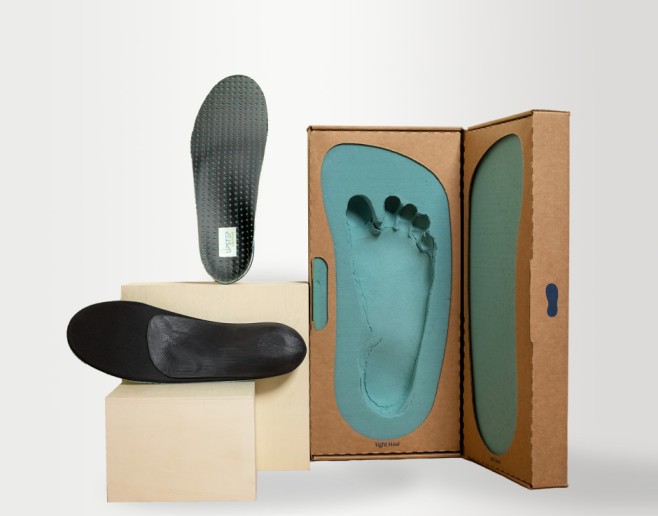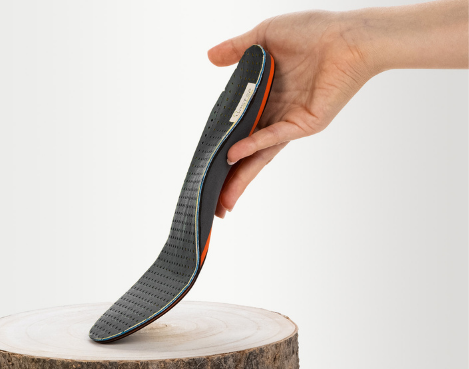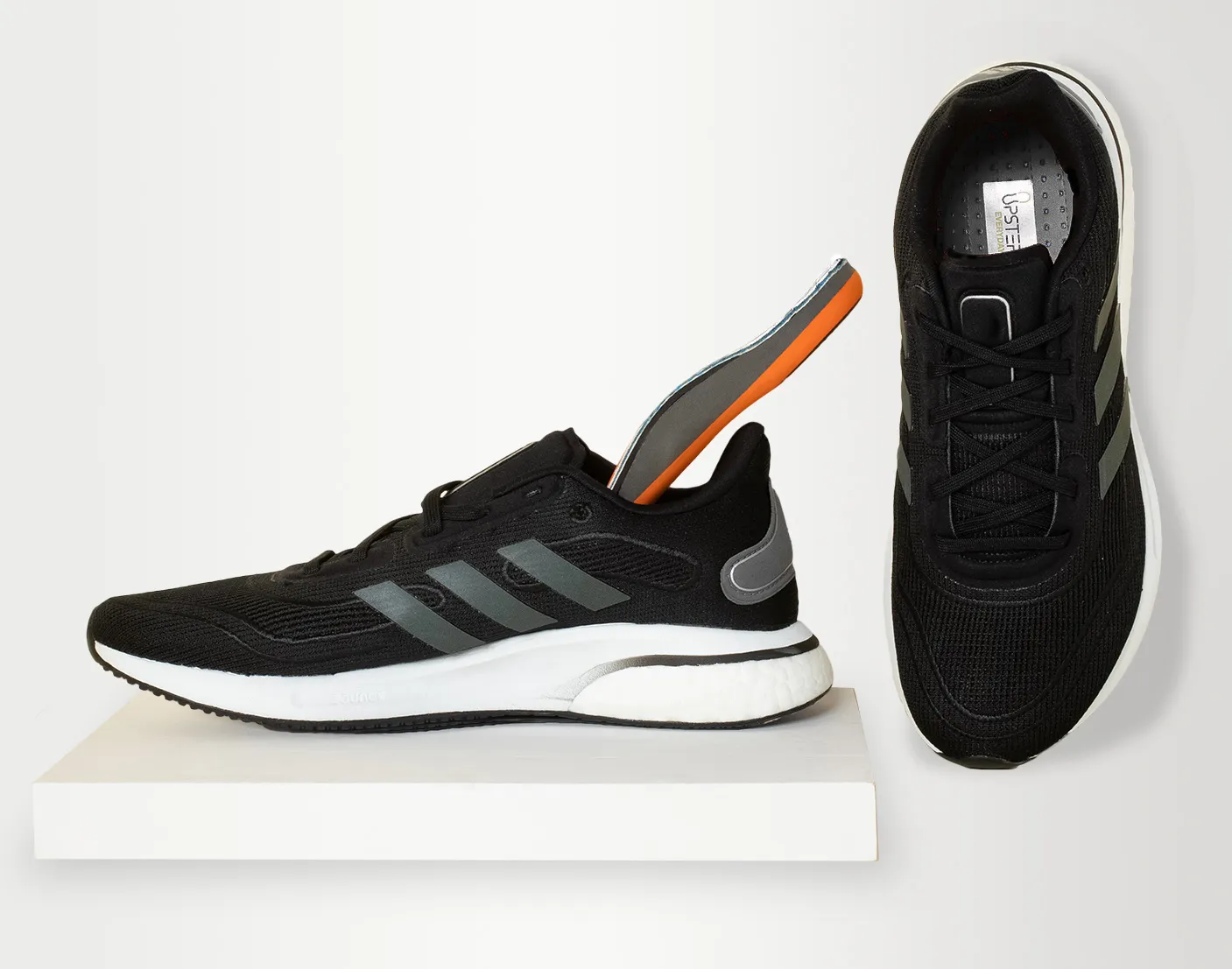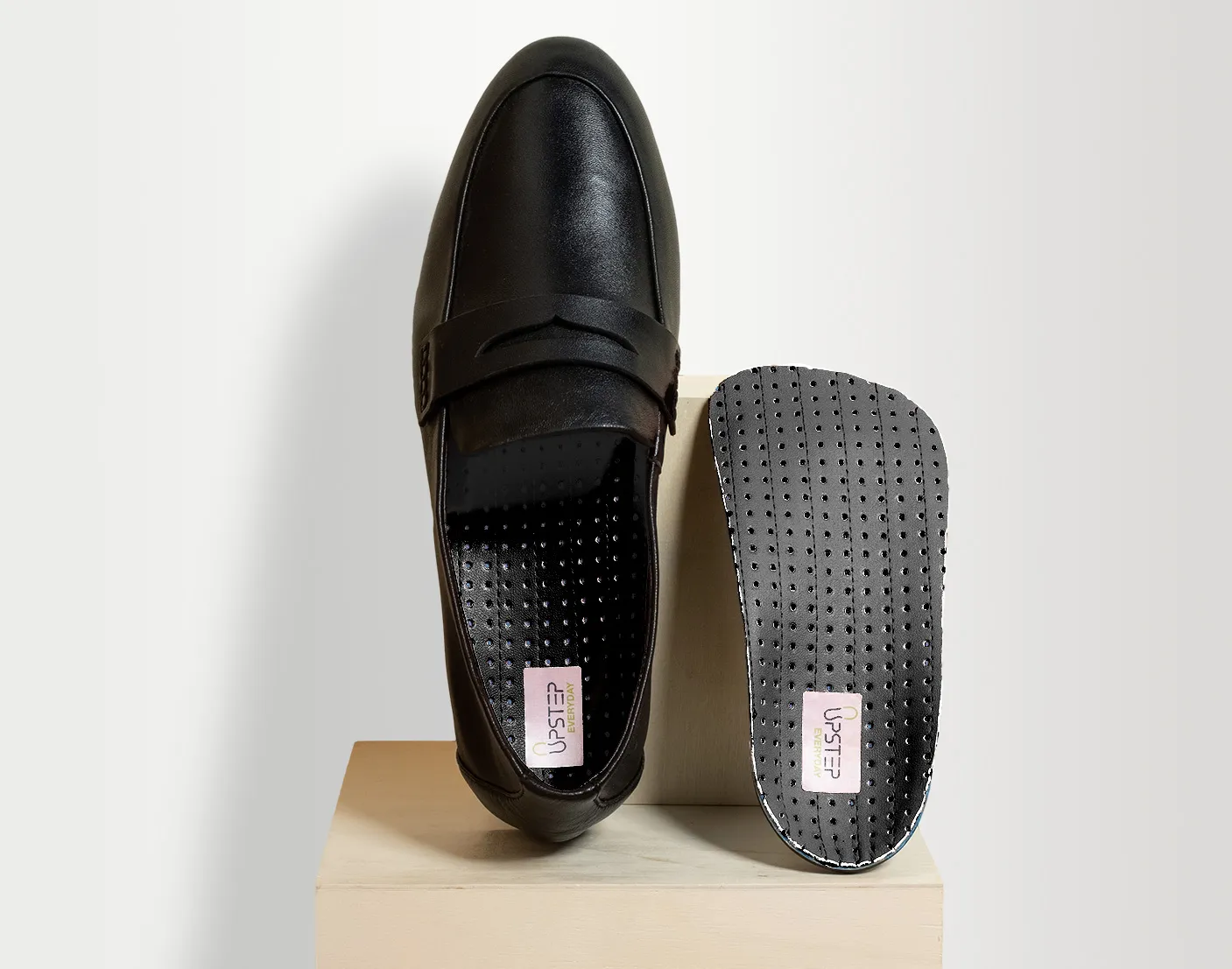Best Orthotics for Flat Feet and Plantar Fasciitis
Tired of letting foot pain dictate your life? Discover how custom orthotics can transform your daily routine and put a spring back in your step
Updated December 16, 2024

Flat feet and plantar fasciitis can turn your world upside down. The constant ache, the disrupted sleep, and the limitations on your daily activities can be unbearable. But it doesn't have to be this way.
Discover how custom orthotics can revolutionize your foot health and bring back the joy of movement.
» Learn how orthotics can alleviate your flat feet and plantar fasciitis pain
Understanding Flat Feet and Plantar Fasciitis
Flat feet, characterized by fallen arches, can result from genetics, developmental issues, injuries, aging, or underlying health conditions like obesity, diabetes, or arthritis. Pregnancy can also temporarily contribute to flat feet.
A common consequence of flat feet is overpronation, where the foot rolls inward excessively. This increases stress on the plantar fascia, a thick band of tissue connecting the heel to the toes. Chronic strain on the plantar fascia can lead to plantar fasciitis, causing inflammation and heel pain.
Identifying the underlying cause of plantar fasciitis is crucial to effectively treating it. Orthotics often provide relief by supporting the arch and correcting overpronation, especially when flat feet are a contributing factor.
» Learn more about the secondary conditions associated with flat feet
Pain Associated with Flat Feet and Plantar Fasciitis
The discomfort experienced with flat feet and plantar fasciitis can vary in intensity and location:
- Heel Pain: This is the most common symptom of plantar fasciitis. The pain is often described as sharp or stabbing and is typically worse with the first few steps in the morning or after periods of rest.
- Arch Pain: Many experience aching or burning pain along the entire foot arch, especially after standing or walking for extended periods.
- Midfoot Pain: Some individuals report pain in the middle of the foot, particularly after activities that involve repetitive impact.
- Ankle and Knee Pain: The altered biomechanics of flat feet can lead to pain that extends up the leg, affecting the ankles and knees.
- Fatigue Pain: The muscles in the feet and calves may tire more quickly, leading to a dull, aching pain that worsens throughout the day.
- Night Pain: In severe cases of plantar fasciitis, individuals may experience throbbing pain at night, disrupting sleep.
» Discover the best insoles for plantar-fasciitis-related calf pain
Best Orthotics for Flat Feet and Plantar Fasciitis
The Role of Orthotics
Research has consistently demonstrated the effectiveness of orthotics in treating plantar fasciitis caused by flat feet. These specialized inserts play a crucial role in foot health and comfort by addressing several key aspects:
- Artificial Arch Support: Orthotics provide the necessary support to compensate for fallen arches. This artificial arch reduces the strain on the plantar fascia, alleviating pain and preventing further damage.
- Improved Biomechanics: Insoles help improve overall gait and balance by limiting abnormal foot motion, particularly overpronation. This correction in biomechanics can reduce pain in the feet, ankles, knees, hips, and lower back.
- Enhanced Shock Absorption: Orthotics improve the foot's ability to absorb shock during walking or running. This is particularly important for those with flat feet, as their natural shock absorption mechanism is compromised.
- Prevention of Future Complications: By addressing the root cause, orthotics can prevent the development of further debilitating foot conditions.
» Check out how to massage sore heels from plantar fasciitis
Over-the-Counter vs. Customized
While over-the-counter orthotics can relieve mild foot discomfort, they often fall short when addressing complex conditions like flat feet and plantar fasciitis. For these issues, custom orthotics are the superior choice.
Made from a precise mold of your feet, custom orthotics provide unparalleled support and correction. Unlike generic insoles, they are tailored to your unique foot structure and gait, addressing the root causes of your pain.
Custom orthotics can significantly alleviate the discomfort associated with flat feet and plantar fasciitis by offering targeted support and cushioning, promoting long-term relief and improved foot function.
» Support your feet with the best insoles for flat feet
What To Look For When Choosing Orthotics
Selecting the right orthotic for flat feet and plantar fasciitis depends on several factors, including your type of flat feet and the severity of your condition.
Understand Your Foot Type
There are two primary types of flat feet:
- Flexible flat feet: The arch disappears when standing but reappears when sitting. These feet often benefit from orthotics with medium to high arch support to correct overpronation.
- Rigid flat feet: The arch is absent both when standing and sitting. These feet require a different approach, often with softer, more flexible orthotics that offer cushioning and support without excessive correction.
Key Features
Not all orthotics are created equal, especially when addressing conditions like flat feet and plantar fasciitis. To effectively manage these issues, your orthotics should possess these key characteristics:
- Proper Fit: For optimal support and relief, an orthotic should precisely match the contours of your foot. Custom orthotics create a more personalized fit.
- Firm Arch Support: Flat feet contribute to plantar fasciitis by causing overpronation, so a firm arch is essential. This support helps to control excessive foot roll and reduce strain on the plantar fascia.
- Deep Heel Cup: A deep heel cup ensures proper foot alignment, shock absorption, and stability during movement. It helps to distribute pressure evenly and improve overall comfort.
» Discover the best insoles for plantar fasciitis-related calf pain
End the Foot Pain Nightmare
Plantar fasciitis is a persistent condition that requires patience and consistent care. Healing takes several weeks and involves rest, targeted exercises, and weight management. Custom orthotics are a vital part of treatment, as they provide essential support and correct foot alignment.
A combination of these approaches can significantly improve foot function and reduce discomfort over time by addressing the symptoms and underlying causes of plantar fasciitis.
» Experience the relief of custom orthotics for flat feet and plantar fasciitis















